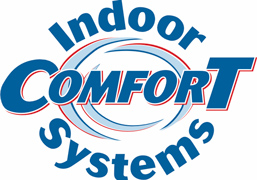
We spend a good majority of our time inside. In fact, the Environmental Protection Agency (EPA) has approximated being within a building accounts for 90% of our schedule. Having said that, the EPA also has found your indoor air can be three to five times worse than outside your home.
That’s due to the fact our homes are firmly sealed to enhance energy efficiency. While this is fantastic for your utility bills, it’s not so great if you’re amid the 40% of the population with respiratory allergies.
When outside ventilation is restricted, pollutants including dust and volatile organic compounds (VOCs) could get trapped. Consequently, these pollutants can worsen your allergies.
You can boost your indoor air quality with clean air and usual cleaning and vacuuming. But if you’re still struggling with symptoms during the time you’re at your house, an air purifier might be able to provide assistance.
While it can’t remove pollutants that have gotten trapped in your furniture or carpeting, it may help purify the air traveling around your house.
And air purification has also been scientifically proven to help reduce some allergic symptoms, according to the American College of Allergy, Asthma and Immunology. It may also be helpful if you or a family member has lung issues, such as emphysema or COPD.
There are two kinds, a portable air purifier or a whole-home air purifier. We’ll examine the distinctions so you can determine what’s correct for your home.
Whole-House Air Purifier vs. Portable Air Purifiers
A portable air purifier is for a lone room. A whole-house air purifier works alongside your home comfort unit to purify your full residence. Some kinds can clean by themselves when your HVAC equipment isn’t running.
What’s the Best Air Purifier for Allergies?
Go after a purifier with a High Efficiency Particulate Air (HEPA) filter. HEPA filters are used in hospitals and provide the greatest filtration you can find, as they trap 99.97% of particles in the air.
HEPA filters are even more beneficial when installed with an ultraviolet (UV) germicidal light. This powerful mixture can eliminate dust, dander, pollen and mold, all of which are common allergens. For the greatest in air purification, think over a system that also has a carbon-based filter to reduce household smells.
Avoid buying an air purifier that creates ozone, which is the primary ingredient in smog. The EPA cautions ozone might irritate respiratory problems, even when emitted at minor settings.
The Allergy and Asthma Foundation of America has created a checklist of questions to consider when buying an air purifier.
- What can this purifier remove from the air? What doesn’t it extract?
- What’s its clean air delivery rate? (A higher figure means air will be purified more quickly.)
- How often does the filter or UV bulb need to be replaced]? Can I finish that on my own?
- How much do new filters or bulbs cost?
How to Decrease Seasonal Allergy Symptoms
Want to receive the {top|most excellent|best] results from your new air purification unit? The Mayo Clinic suggests completing other steps to reduce your exposure to problems that can cause seasonal allergies.
- Stay inside and keep windows and doors closed when pollen counts are heightened.
- Have other household members cut the lawn or pull weeds, since these jobs can trigger symptoms. If you have to do these jobs yourself, consider wearing a pollen mask. You should also shower immediately and change your clothes once you’re completed.
- Avoid drying laundry outside.
- Turn on your air conditioner while indoors or while you’re on the road. Consider installing a high efficiency air filter in your house’s HVAC unit.
- Equalize your house’s humidity percentage with a whole-house dehumidifier.
- Hardwood, tile or linoleum are the ideal flooring types for decreasing indoor allergens. If your home has carpet, use a HEPA filter on your vacuum cleaner.
Let Our Pros Manage Your Indoor Air Quality Needs
Prepared to move forward with getting a whole-house air purifier? Give our professionals a call at 215-741-5505 or contact us online to get an appointment. We’ll help you choose the best equipment for your family and budget.
